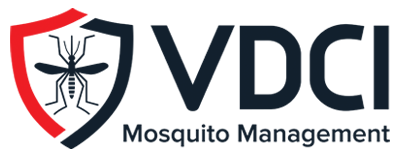Protect Citizens from Abundant Mosquito Populations Post-Storm
Mosquitoes are a continual threat we face each year, and in some areas, they pose a danger all year round. The risk of exposure to mosquitoes can increase exponentially following hurricanes, violent rainstorms, and other natural disasters that leave moisture and standing water—ideal mosquito habitat—in their wake. Emergency response must be swift in order to interrupt breeding activities before mosquito populations surge, but preparing an emergency response plan at the last hour can be detrimental to a community by wasting time, funds, and resources. Developing a response plan for your state or municipality ahead of emergencies will help ensure all the bases are covered when emergencies ensue.
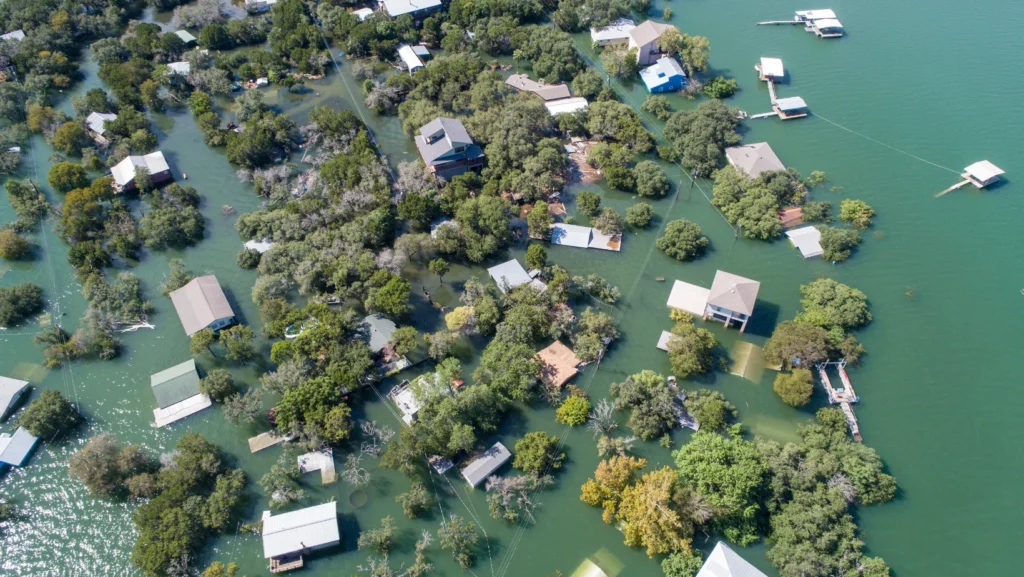
How Mosquito Problems Develop After A Storm
A female mosquito can lay up to 200 eggs in a source of standing water, sometimes as small as a puddle or bottle cap. Following a storm, entire communities can serve as a breeding ground for multiple mosquito species, which can peak over the course of several days and weeks. Vector-disease control companies with a focus on protecting public health are equipped with the tools and knowledge to help communities evaluate the risks they may face following a natural disaster and can customize a preparation plan to mitigate explosions of pest mosquito populations as well as the spread of deadly diseases like Zika, Dengue, West Nile Virus, and Yellow Fever during these times of crisis.
How to Begin Building An Emergency Response Plan
When building effective emergency response plans, VDCI’s ground crews and pilots start by mapping the physical characteristics of the region to identify areas of vulnerability and potential inaccessibility, as well as zones that should be excluded from mosquito treatments due to the presence of endangered species. This information is collected in accordance with requirements set forth by the Environmental Protection Agency (EPA), Centers for Disease Control (CDC), and the Federal Emergency Management Agency (FEMA).
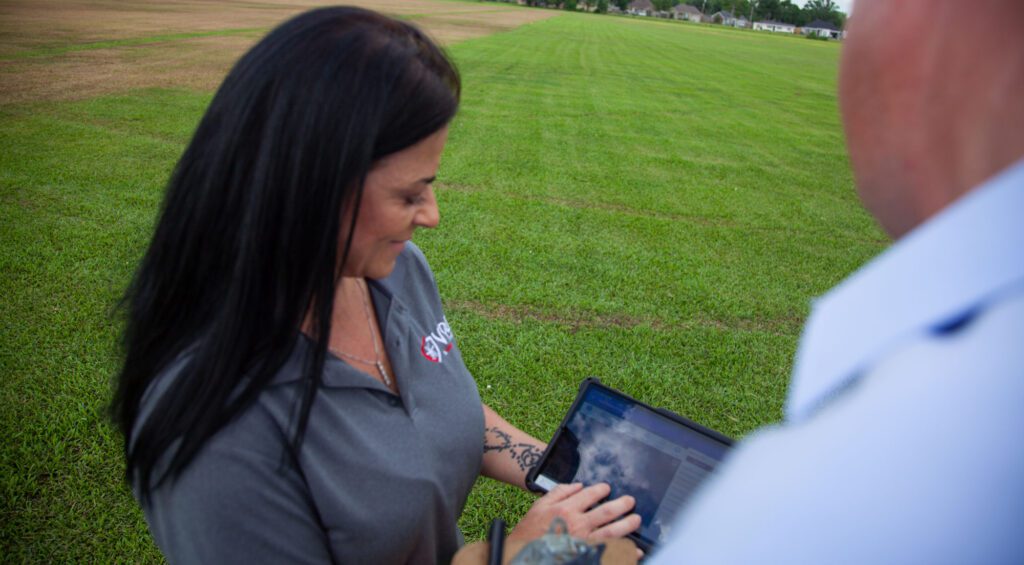
VDCI then conducts monitoring and surveillance in target zones to assess local mosquito populations, species dynamics, and disease presence. During this process, experts utilize different types of specialized traps, laboratory tests, and GIS/GPS technologies like state-of-the-art drones to uncover potential trends or patterns in mosquito activity. This comprehensive data is used to establish a baseline that informs every management choice when an emergency occurs, from the types of products used to the frequency of applications. Licensed companies also collaborate with state and federal agencies, local health departments, and media groups to educate community members about mosquito prevention and personal protection strategies.
Prepping for Aerial Mosquito Control Applications
When potential weather emergencies are expected, our experts closely monitor the progression of the storm or hurricane and ensure our aerial and ground fleets are poised to deploy at any time. This preparation includes conducting final inspections of aircraft and servicing loading trucks, communicating with the Federal Aviation Administration (FAA), bringing in pesticides and advanced equipment, and setting up a home base from which scientists, pilots, and ground crews can safely operate.
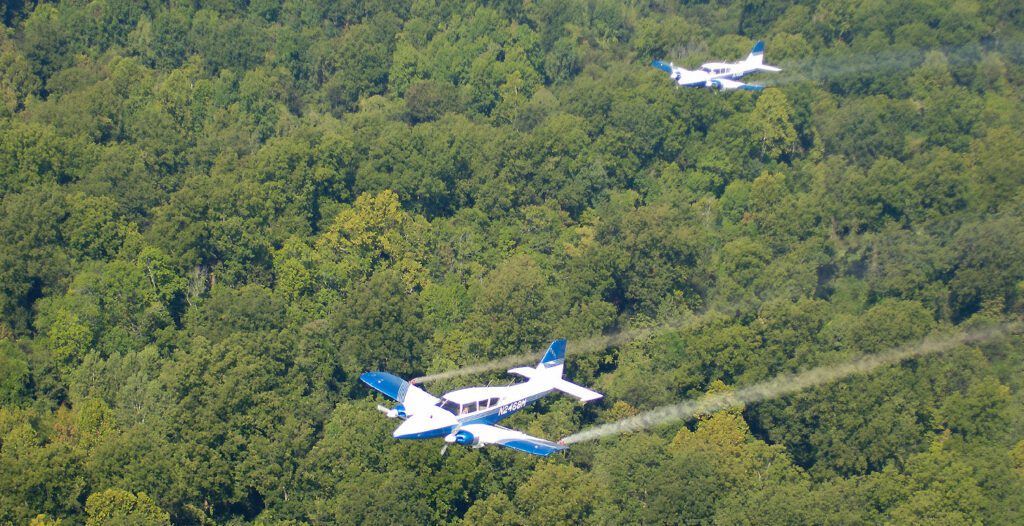
Executing An Emergency Response Plan
Once authorized by local authorities, VDCI can take immediate action to apply Ultra Low Volume pesticides that have been EPA-registered for public health use. The primary delivery method is by aircraft; a single plane can treat an average of 30,000 acres in a single evening without obstruction by damaged roads, flooding, downed trees, or other wreckage. However, ground crews can be used to tackle areas where aerial applications may not be suitable. Ground crews are capable of covering roughly 3,000 acres in a single evening with Ultra Low Volume pesticides, which have been tested and do not pose a significant risk to humans or non-target insects per the Centers for Disease Control and Prevention (CDC).
Once a mission is complete, project responsibilities are not over. VDCI continues trapping and laboratory analysis efforts to measure the success of applications and determine if the mosquito populations have been adequately minimized. This information is then reported to authorities and stakeholders to ensure their goals have been achieved—with the ultimate goal of protecting the public and relief workers as they work to restore power, clear roads, manage flooding, rebuild infrastructure, and aid displaced homeowners.
Hyperactive Storm Seasons Are Coming... Are You Prepared?
Trends indicate that natural disasters are becoming more frequent and intense. The most responsible and effective way for states and local governments to protect their communities is through proactive planning with an experienced vector-disease control company. With a detailed plan in place, communities can focus exclusively on critical restoration efforts that must take place after deadly storms, rather than the often overlooked threat of deadly diseases.
Download the VDCI Emergency Response Informative Guide
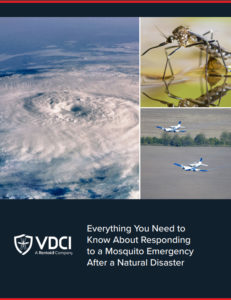 Torrential rainstorms, hurricanes, flooding, and other weather events are often followed by a rise in local mosquito populations that can persist for weeks or months, often interfering with recovery efforts. Learn the importance of post-disaster mosquito management and how to create an emergency response plan to aid recovery efforts in your community so that you can help protect your community after a natural disaster. Prepare now, be protected later.
Torrential rainstorms, hurricanes, flooding, and other weather events are often followed by a rise in local mosquito populations that can persist for weeks or months, often interfering with recovery efforts. Learn the importance of post-disaster mosquito management and how to create an emergency response plan to aid recovery efforts in your community so that you can help protect your community after a natural disaster. Prepare now, be protected later.
Our Experience and Qualifications
For more than 20 years, Vector Disease Control International (VDCI) has aided mosquito control and recovery efforts following natural disasters. Starting with Hurricane Bonnie in 1998, VDCI’s emergency response team has supported communities and abatement districts in protecting relief workers and displaced members of the public.
Our team can help your community create an emergency response contingency plan for mosquito control efforts after a hurricane, major flood event, or increased disease activity.
Does your community have an emergency response contingency plan in place for mosquito control? If not, contact us today or call 800.413.4445 to learn more about how we can help you prepare for the unexpected.
Contact Us Today to Learn How You Can Build an Emergency Response Plan for Your Community
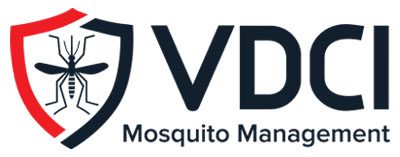 Since 1992, Vector Disease Control International (VDCI) has taken pride in providing municipalities, mosquito abatement districts, industrial sites, planned communities, homeowners associations, and golf courses with the tools they need to run effective mosquito control programs. We are determined to protect the public health of the communities in which we operate. Our mosquito control professionals have over 100 years of combined experience in the field of public health, specifically vector disease control. We strive to provide the most effective and scientifically sound mosquito surveillance and control programs possible based on an Integrated Mosquito Management approach recommended by the American Mosquito Control Association (AMCA) and Centers for Disease Control and Prevention (CDC). VDCI is the only company in the country that can manage all aspects of an integrated mosquito management program, from surveillance to disease testing to aerial application in emergency situations.
Since 1992, Vector Disease Control International (VDCI) has taken pride in providing municipalities, mosquito abatement districts, industrial sites, planned communities, homeowners associations, and golf courses with the tools they need to run effective mosquito control programs. We are determined to protect the public health of the communities in which we operate. Our mosquito control professionals have over 100 years of combined experience in the field of public health, specifically vector disease control. We strive to provide the most effective and scientifically sound mosquito surveillance and control programs possible based on an Integrated Mosquito Management approach recommended by the American Mosquito Control Association (AMCA) and Centers for Disease Control and Prevention (CDC). VDCI is the only company in the country that can manage all aspects of an integrated mosquito management program, from surveillance to disease testing to aerial application in emergency situations.
